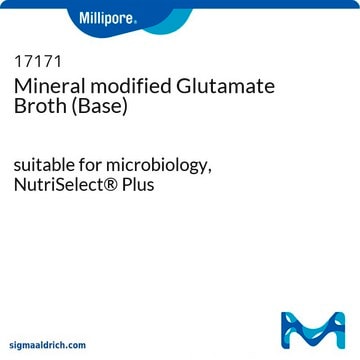E6511
Ethylenediaminetetraacetic acid tetrasodium salt dihydrate
BioReagent, suitable for cell culture, 98.5-102.0%
Synonym(s):
EDTA tetrasodium salt, Edathamil, Tetrasodium ethylenediaminetetraacetate dihydrate
About This Item
Recommended Products
product line
BioReagent
Assay
98.5-102.0%
form
powder
technique(s)
cell culture | mammalian: suitable
solubility
H2O: 160 mg/mL
shipped in
ambient
storage temp.
room temp
SMILES string
O.O.[Na+].[Na+].[Na+].[Na+].[O-]C(=O)CN(CCN(CC([O-])=O)CC([O-])=O)CC([O-])=O
InChI
1S/C10H16N2O8.4Na.2H2O/c13-7(14)3-11(4-8(15)16)1-2-12(5-9(17)18)6-10(19)20;;;;;;/h1-6H2,(H,13,14)(H,15,16)(H,17,18)(H,19,20);;;;;2*1H2/q;4*+1;;/p-4
InChI key
KSYNLCYTMRMCGG-UHFFFAOYSA-J
Looking for similar products? Visit Product Comparison Guide
General description
Application
- as a chelating agent to isolate human endometrial stem cell/stromal cells (hEnSCs) from menstrual blood
- as a chelator in animal and testicular cell isolation
- as a chelator for the culture of neural stem cells
Biochem/physiol Actions
Signal Word
Danger
Hazard Statements
Precautionary Statements
Hazard Classifications
Acute Tox. 4 Inhalation - Acute Tox. 4 Oral - Eye Dam. 1 - STOT RE 2
Target Organs
Respiratory Tract
Storage Class Code
11 - Combustible Solids
WGK
WGK 2
Flash Point(F)
Not applicable
Flash Point(C)
Not applicable
Personal Protective Equipment
Certificates of Analysis (COA)
Search for Certificates of Analysis (COA) by entering the products Lot/Batch Number. Lot and Batch Numbers can be found on a product’s label following the words ‘Lot’ or ‘Batch’.
Already Own This Product?
Find documentation for the products that you have recently purchased in the Document Library.
Customers Also Viewed
Our team of scientists has experience in all areas of research including Life Science, Material Science, Chemical Synthesis, Chromatography, Analytical and many others.
Contact Technical Service












